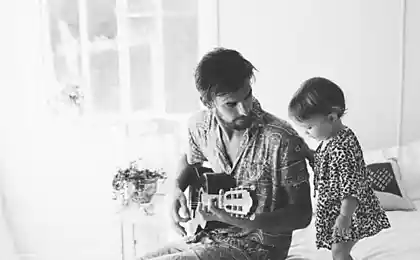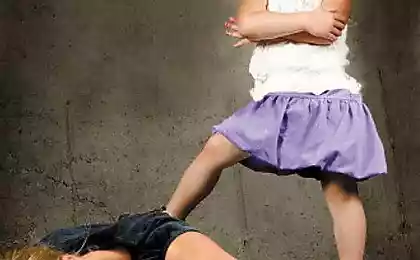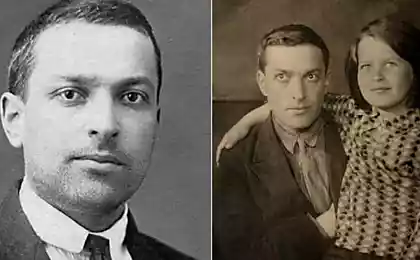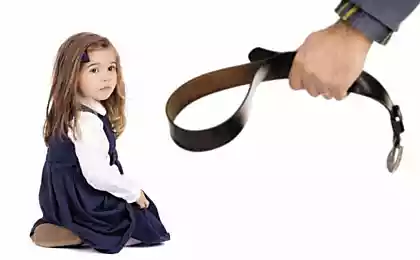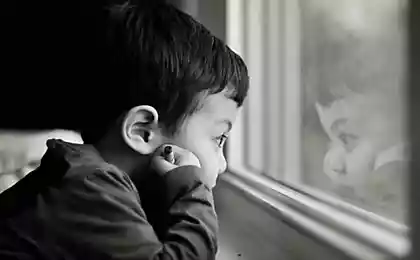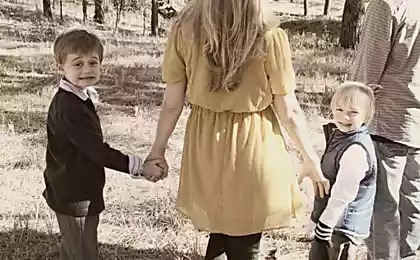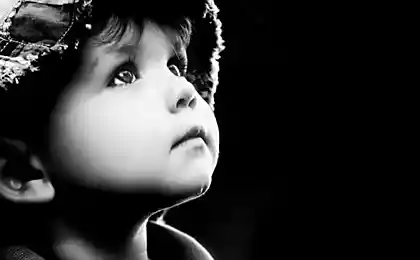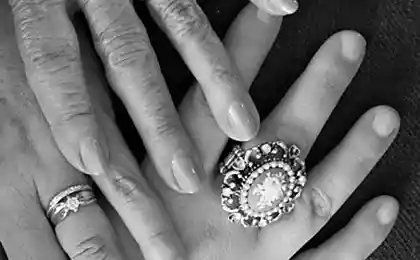1005
A selection of the most questionable techniques for raising children
A selection of the most dubious technologies for education of children from the pages of "Popular Science» (Popular Science). Most of them have never been popular. At least half of these inventions have been made in the interests of adults, not children, so they now seem meaningless. For example, electric cradle, suspended on wooden beams, which is more like swinging a prison cell than a cradle. Or literally a tin can with a perforated lid to hold babies in trains.
1. Sleeping balcony: May 1916
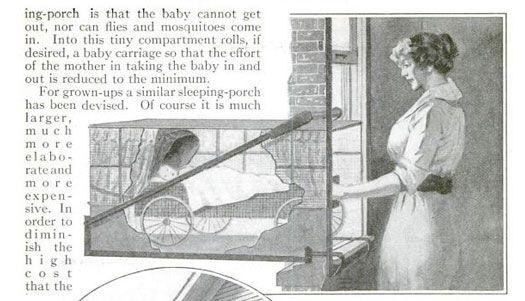
As the population people began to pay more attention to the problem of raising children in a limited space. The inventors have proposed a miniature bedroom balconies, which can be installed on any window. In view of the structure seems sound: metal spacers to withstand up to 227 kg (500 lbs) weight and fastenings are not afraid of even a strong wind. Instead of windows installed grill, children could not get out, and a special mesh protecting them from pesky insects. Judging by the picture, there was enough space to place the small carriage.
2. Automatic Cradle: September 1917
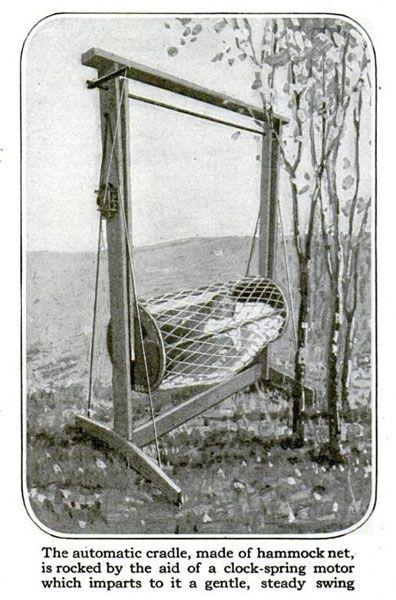
Like most new parents, Sheldon D. Vanderburgh, inventor from New York, was tired from the constant crying child. A decision was the makeshift crib. First Vanderburgh made something like a basket by attaching the mesh to the two wooden disks. Hanging basket in a wooden frame, Vanderburgh realized that his invention will become even more effective if the cradle is rocking itself. He assembled the mechanism, which rotates the crank attached to the crossbar. And now we face an automatic cradle. As a bonus attached soft ticking sound, soothing the child.
3. Case for Child: October 1917
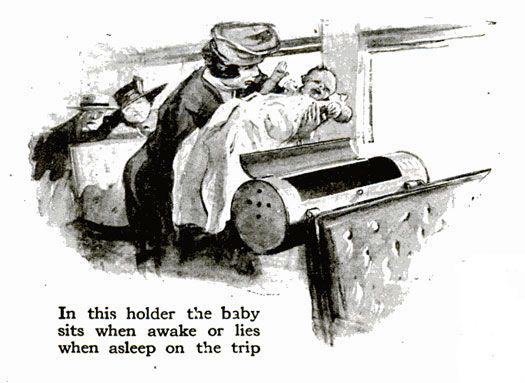
Previously, the children irritated passengers of commercial flights, disrupting their rest during the trip. "For many years, we were hoping that some clever inventor figure out how to plug in a tin noisy babies at night - wrote one passenger - we proposed a hermetically sealed container, wrapped in a sound-proof material».
Caleb Prater of Illinois has developed a perforated container for the children as a portable crib. In the waking hours the child can sit in the box with the lid open. During sleep, the cover is closed, and you can breathe through the vents.
4. Cradle-driven: February 1920
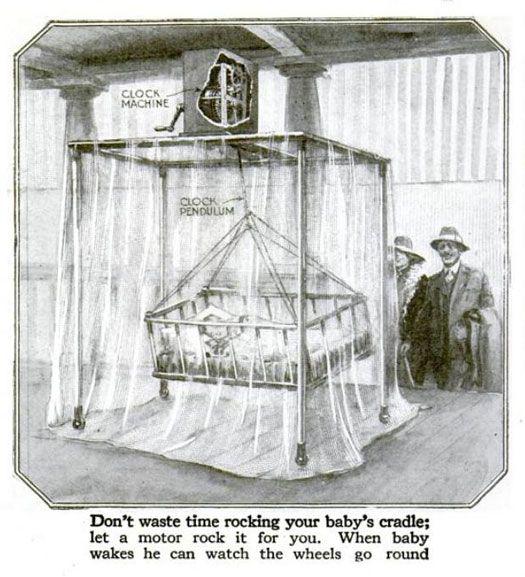
As Vanderburgh cradle, the cradle of Luther Jones actuates the clockwork. Cradle hung on chains attached to metal frame. To put it into action, you just need to have a mechanism and watch as the engine rotates the wheel. The movement of the wheel will result in a child swinging chain and instantly fall asleep. And if the child wakes up, and no one is near, the gear mechanism to attract his attention.
5. Children's bicycle seat: October 1938
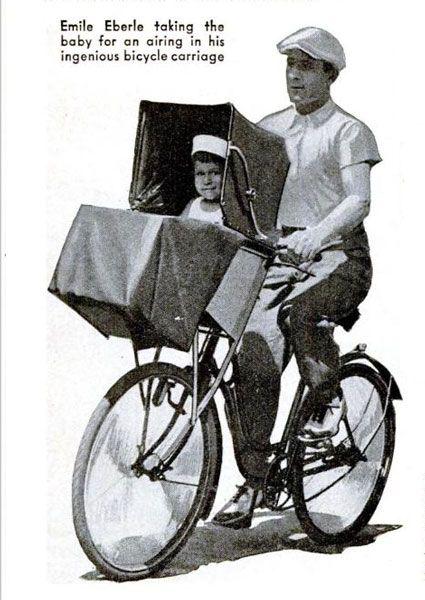
Do you want to be with your child, even during outdoor activities? Then you can appreciate a child seat on the handlebars of the bicycle. In appearance it is not very reliable, but Emil Eberle, the inventor of Geneva, found his creation sufficiently safe for your child. The seat is attached to the steering wheel and metal frame was connected to the central axis of the front wheel.
6. Children's mask: November 1983
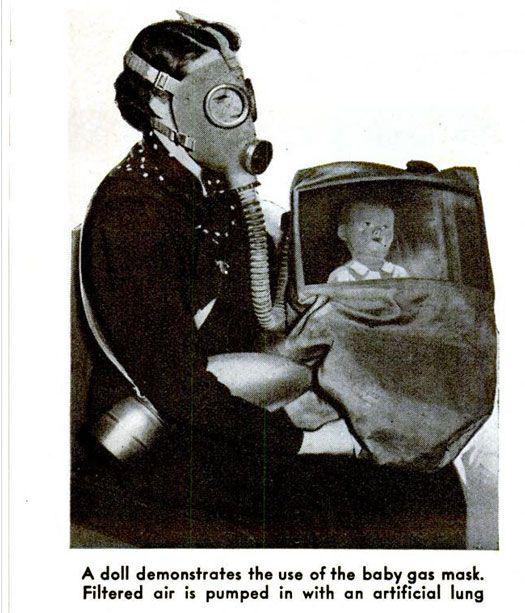
Maybe now like mask and looks funny, but in 1938 the threat of a gas attack was very serious. Designed in France, the mask is a sealed bag, complete with manual air supply system and the filtering unit. Those who held the baby could control the supply of fresh air, pumping it with a blower.
7. UV lamp to mark the newborn: December 1938
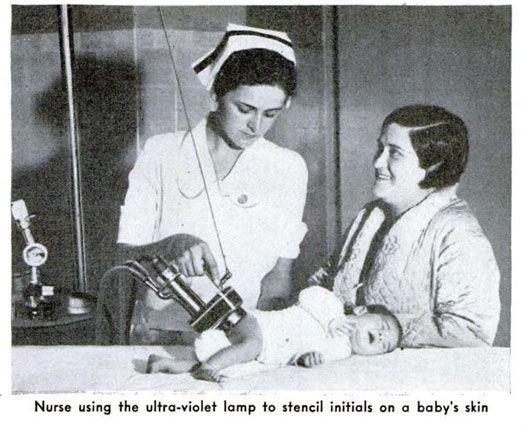
No one would not want to come back from the hospital with a strange child. To avoid confusion, it was designed UV lamp to mark births, which burns the skin on the child's initials. Ultraviolet rays pass through a stencil with the initials of a baby, leaving pale marks, which disappeared after a couple of weeks. The first sunburn of the child. ... Is not that pathetic?
8. Improved children's mask: August 1939
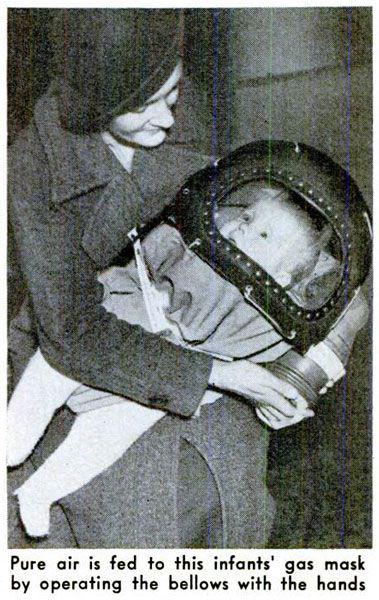
The article was written on the mask 3 months before the German attack on Poland. In its development the English inventor took 3 years. As in the previous model, the new mask is a filter and air intake control is carried out by adults. Cloth of the device is made of a rubberized material and a gas-tight, and the window in the helmet allows the child to observe what is happening around.
9. Walkers: September 1939
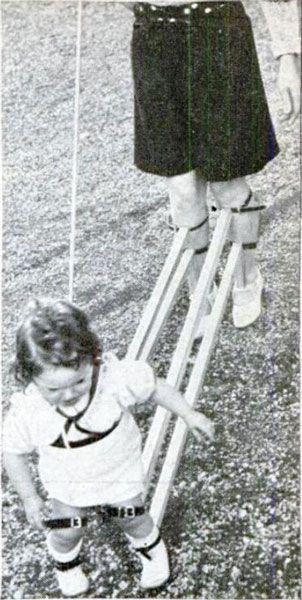
Most parents teach children to walk or raising their hands or forking on a walker with wheels. However, a Swiss engineer decided it would be better if you combine your feet with baby feet with wooden sticks. Thus, he could direct the movement of the baby. And the straps attached to the top of the bar to help the child maintain balance.
10. Harness for the bathroom: October 1939
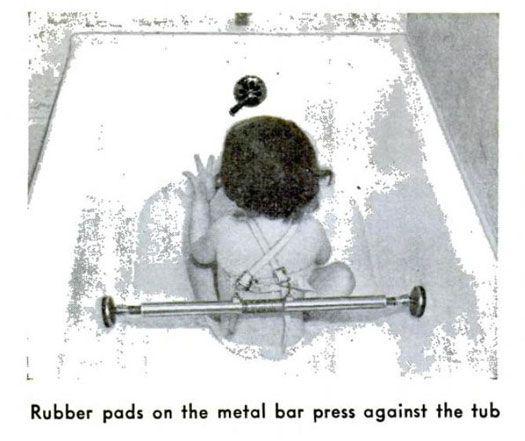
Do not leave a young child alone in the bathtub. But if suddenly the doorbell rang or another child is crying in the next room, there is a need to absent himself for one second - what bad could happen? Any mother knows that everything can happen, anything. And for those who do not have to ask someone for help, Carl Fischer, an engineer from Iowa, gathered a small metal rod that ensures the safety of young children in the bathtub, while their mothers are busy household chores. You just need to fasten the child seat to the rod, which is fixed to the sides of his bath with rubber suction cups. And the kid is not going anywhere.
1. Sleeping balcony: May 1916

As the population people began to pay more attention to the problem of raising children in a limited space. The inventors have proposed a miniature bedroom balconies, which can be installed on any window. In view of the structure seems sound: metal spacers to withstand up to 227 kg (500 lbs) weight and fastenings are not afraid of even a strong wind. Instead of windows installed grill, children could not get out, and a special mesh protecting them from pesky insects. Judging by the picture, there was enough space to place the small carriage.
2. Automatic Cradle: September 1917

Like most new parents, Sheldon D. Vanderburgh, inventor from New York, was tired from the constant crying child. A decision was the makeshift crib. First Vanderburgh made something like a basket by attaching the mesh to the two wooden disks. Hanging basket in a wooden frame, Vanderburgh realized that his invention will become even more effective if the cradle is rocking itself. He assembled the mechanism, which rotates the crank attached to the crossbar. And now we face an automatic cradle. As a bonus attached soft ticking sound, soothing the child.
3. Case for Child: October 1917

Previously, the children irritated passengers of commercial flights, disrupting their rest during the trip. "For many years, we were hoping that some clever inventor figure out how to plug in a tin noisy babies at night - wrote one passenger - we proposed a hermetically sealed container, wrapped in a sound-proof material».
Caleb Prater of Illinois has developed a perforated container for the children as a portable crib. In the waking hours the child can sit in the box with the lid open. During sleep, the cover is closed, and you can breathe through the vents.
4. Cradle-driven: February 1920

As Vanderburgh cradle, the cradle of Luther Jones actuates the clockwork. Cradle hung on chains attached to metal frame. To put it into action, you just need to have a mechanism and watch as the engine rotates the wheel. The movement of the wheel will result in a child swinging chain and instantly fall asleep. And if the child wakes up, and no one is near, the gear mechanism to attract his attention.
5. Children's bicycle seat: October 1938

Do you want to be with your child, even during outdoor activities? Then you can appreciate a child seat on the handlebars of the bicycle. In appearance it is not very reliable, but Emil Eberle, the inventor of Geneva, found his creation sufficiently safe for your child. The seat is attached to the steering wheel and metal frame was connected to the central axis of the front wheel.
6. Children's mask: November 1983

Maybe now like mask and looks funny, but in 1938 the threat of a gas attack was very serious. Designed in France, the mask is a sealed bag, complete with manual air supply system and the filtering unit. Those who held the baby could control the supply of fresh air, pumping it with a blower.
7. UV lamp to mark the newborn: December 1938

No one would not want to come back from the hospital with a strange child. To avoid confusion, it was designed UV lamp to mark births, which burns the skin on the child's initials. Ultraviolet rays pass through a stencil with the initials of a baby, leaving pale marks, which disappeared after a couple of weeks. The first sunburn of the child. ... Is not that pathetic?
8. Improved children's mask: August 1939

The article was written on the mask 3 months before the German attack on Poland. In its development the English inventor took 3 years. As in the previous model, the new mask is a filter and air intake control is carried out by adults. Cloth of the device is made of a rubberized material and a gas-tight, and the window in the helmet allows the child to observe what is happening around.
9. Walkers: September 1939

Most parents teach children to walk or raising their hands or forking on a walker with wheels. However, a Swiss engineer decided it would be better if you combine your feet with baby feet with wooden sticks. Thus, he could direct the movement of the baby. And the straps attached to the top of the bar to help the child maintain balance.
10. Harness for the bathroom: October 1939

Do not leave a young child alone in the bathtub. But if suddenly the doorbell rang or another child is crying in the next room, there is a need to absent himself for one second - what bad could happen? Any mother knows that everything can happen, anything. And for those who do not have to ask someone for help, Carl Fischer, an engineer from Iowa, gathered a small metal rod that ensures the safety of young children in the bathtub, while their mothers are busy household chores. You just need to fasten the child seat to the rod, which is fixed to the sides of his bath with rubber suction cups. And the kid is not going anywhere.




